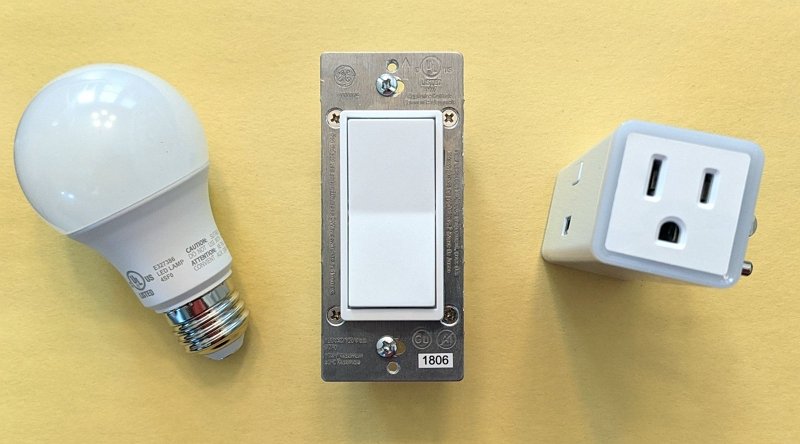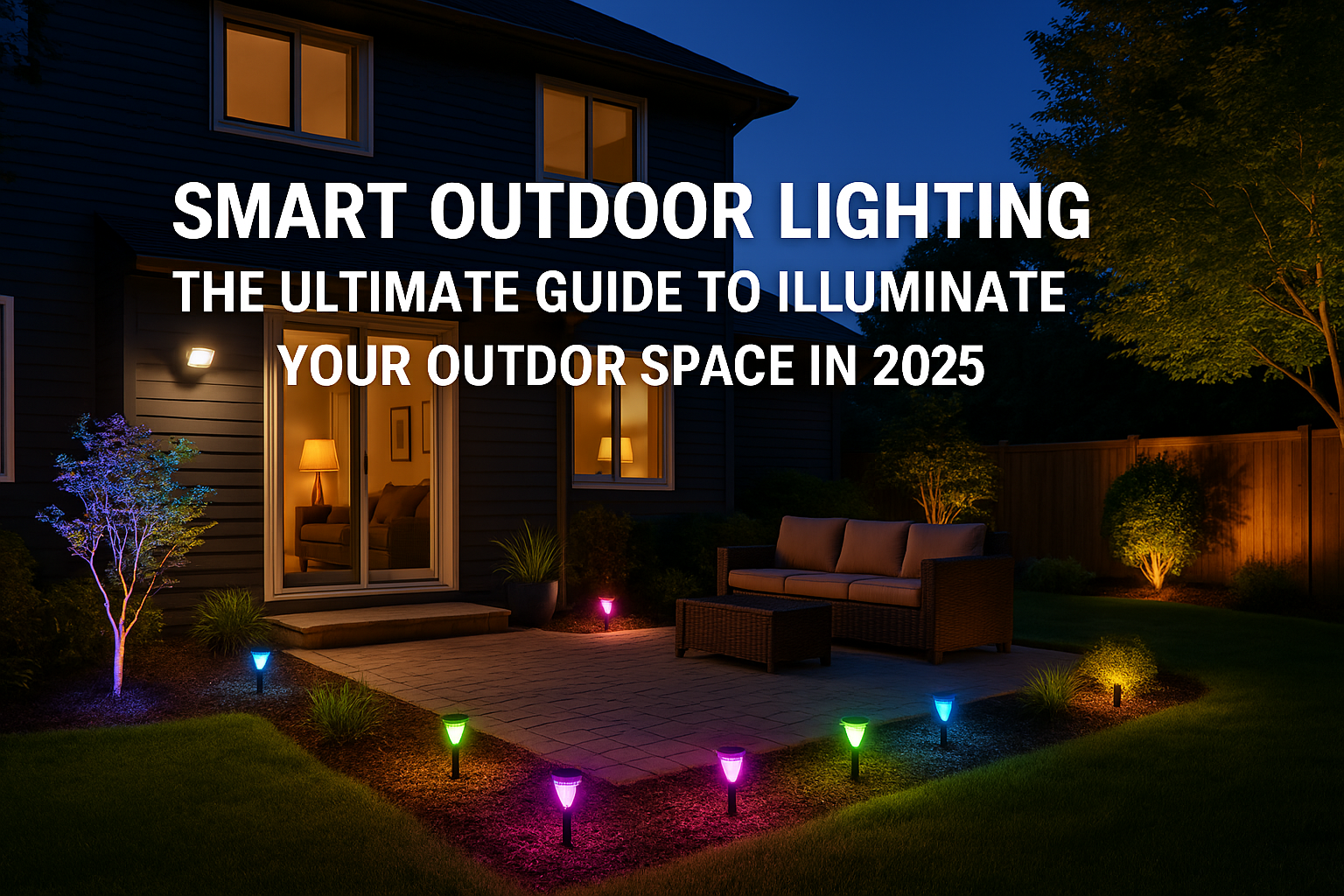Smart Sensors vs Smart Bulbs: Which One Do You Need?

Smart lighting is one of the easiest ways to start building a smart home. With the growing popularity of smart home setups, homeowners, especially beginners, often face a common question: Should you start with smart bulbs or smart light sensors? Both options can elevate your home automation lighting, but they serve different purposes and offer unique benefits.
This guide will compare smart bulbs and smart sensors in terms of features, cost, ease of setup, and more. By the end, you’ll have all the information you need to decide which option (or combination) suits your lifestyle and budget best.
What Are Smart Bulbs?
Definition and How They Work
Smart bulbs are light bulbs designed to connect with your home network, making it easy to control your lighting remotely through a smartphone app or a voice assistant like Alexa or Google Home. Many smart bulbs include color-changing and dimming features, allowing you to customize the ambiance of your space.
Simply twist a smart bulb into any traditional light socket, and you’re ready to start controlling your lighting wirelessly.
Pros of Smart Bulbs
- Easy Installation: Just screw them into your fixtures, pair them with an app, and you’re good to go.
- Mood Lighting: Many models offer millions of colors and brightness adjustments to suit any occasion.
- Voice-Controlled Lighting: Work seamlessly with Alexa/Google Home for hands-free lighting control.
- Flexibility: Move them to new fixtures whenever required.
Cons of Smart Bulbs
- Cost: Prices typically range from $10 to $50 per bulb, which can add up if upgrading a whole house.
- Limited Automation: While you can schedule smart bulbs, they don’t interact with your environment (e.g., motion detection).
Price Range
Smart bulbs are available from $10 for basic models to $50+ for premium options with advanced features like color tuning and energy tracking.
What Are Smart Sensors?
Definition and How They Work
Smart light sensors are wireless devices that detect environmental changes, such as motion or light levels, and send signals to adjust your lighting automatically. For instance, a motion sensor can turn lights on when you enter a room and off when you leave, offering hands-free convenience.
These sensors often work as part of a broader home automation system, communicating with smart bulbs, switches, or hubs to provide seamless automation.
Pros of Smart Sensors
- Automation: Automatically adjust lighting without needing to press a button or touch your phone.
- Energy Efficiency: Lights won’t stay on accidentally, reducing power consumption.
- Hands-Free Convenience: Perfect for busy households or areas like hallways and bathrooms.
Cons of Smart Sensors
- Complex Setup: May require pairing with other devices or a central hub.
- Limited Lighting Features: Sensors don’t offer color tuning or dimming by themselves.
Price Range
Smart sensors typically cost between $20 and $60, depending on features like range, detection types, and compatibility with other devices.
Key Differences Between Smart Bulbs and Smart Sensors
Automation Features
- Smart Bulbs: Offer manual control (via app/voice commands) and basic scheduling, but they rely on user input to adjust.
- Smart Sensors: Provide dynamic automation tailored to your environment by detecting motion or light levels.
Energy Efficiency
- Smart Bulbs: Are efficient on their own, but they require conscious effort to turn off when not in use unless paired with a sensor.
- Smart Sensors: Save more energy by ensuring lights are only on when needed, reducing unnecessary consumption.
Installation Complexity
- Smart Bulbs: Easy to install; just screw them into your existing fixtures.
- Smart Sensors: A bit more complex as they may need to be mounted on walls or ceilings and might require a hub for seamless integration.
Voice Assistant Compatibility
Both smart bulbs and smart sensors are compatible with most popular systems, such as Alexa and Google Home. However, smart sensors are often part of a broader ecosystem, while most smart bulbs work independently.
Cost Over Time
- Smart Bulbs: Higher initial cost if replacing multiple bulbs, but no additional hardware is needed.
- Smart Sensors: Lower upfront costs if combined with your existing bulbs, but upgrading to smart bulbs later can increase expenses.
| Feature | Smart Bulbs | Smart Sensors |
|---|---|---|
| Automation | Manual/Scheduled | Automatic |
| Energy Efficiency | Moderate | High |
| Installation | Plug-and-play | Moderate Complexity |
| Voice Control | Yes | Yes (when paired) |
| Cost | $10–$50 per bulb | $20–$60 per sensor |
Which One Should You Choose?
The choice between smart bulbs and sensors depends on your specific needs, lifestyle, and home size.
- Small Apartments or Rentals: Start with smart bulbs. They’re easy to install and offer plenty of features without any drilling or permanent fixtures.
- Energy-Conscious Households: If reducing electricity usage is a priority, motion-based smart sensors can make a big difference.
- Convenience Seekers: Combine both! Use motion sensors in high-traffic areas like hallways, but keep smart bulbs in spaces where you want fine-tuned control.
- Families or Large Homes: Integrating sensors with existing bulbs can automate your entire home, ensuring convenience and savings.
Can You Use Both Together?
Yes, you can! In fact, smart bulbs and sensors complement each other beautifully. For example, a motion sensor can turn on your smart bulbs when you walk into a room, while the bulbs themselves can provide customized color and brightness.
By combining both, you can create a fully automated smart home setup that feels seamless and personalized. Pairing them with a voice assistant like Alexa or Google Home amplifies the experience, giving you complete control with just a simple command.
Final Recommendation
When deciding between a smart bulb vs smart sensor, start by assessing your needs. If simplicity and ambiance are your priorities, smart bulbs are a solid first step. On the other hand, if automation and efficiency appeal to you, smart sensors are hard to beat.
For the best of both worlds, consider integrating sensors with smart bulbs for an advanced, hands-free lighting experience.
FAQs
Can I control smart bulbs with a sensor?
Yes, smart sensors can communicate with smart bulbs to control them based on motion or environmental conditions. This setup often requires integration through a smart hub or native app.
Are smart sensors more energy-efficient than smart bulbs?
Smart sensors can reduce energy consumption more effectively by automatically turning lights on and off, which eliminates human error.
Do I need a hub to use smart sensors or bulbs?
Most smart bulbs don’t require a hub, as they work using Wi-Fi or Bluetooth. However, many smart sensors benefit from a hub for seamless integration into a broader smart home system.
